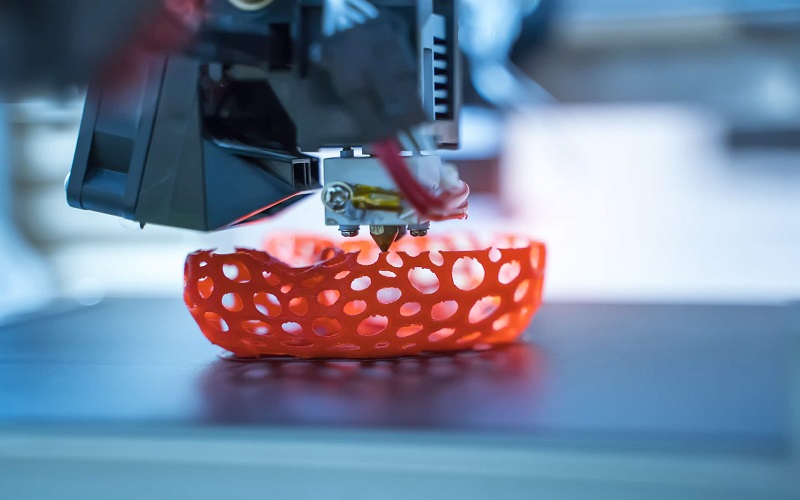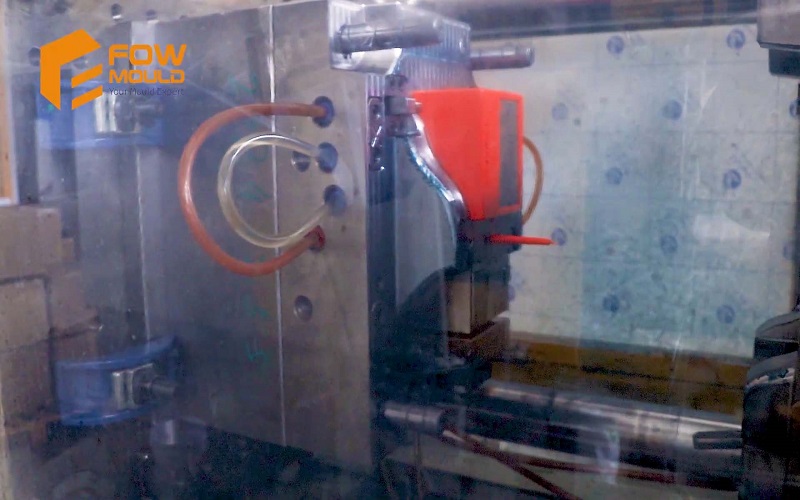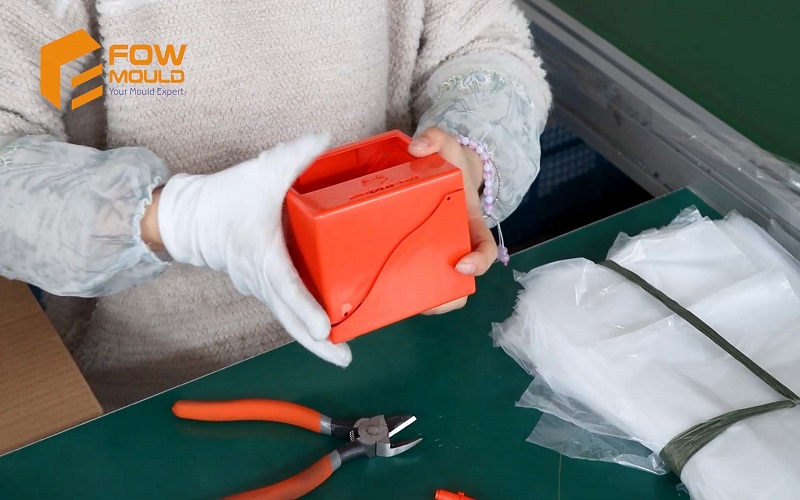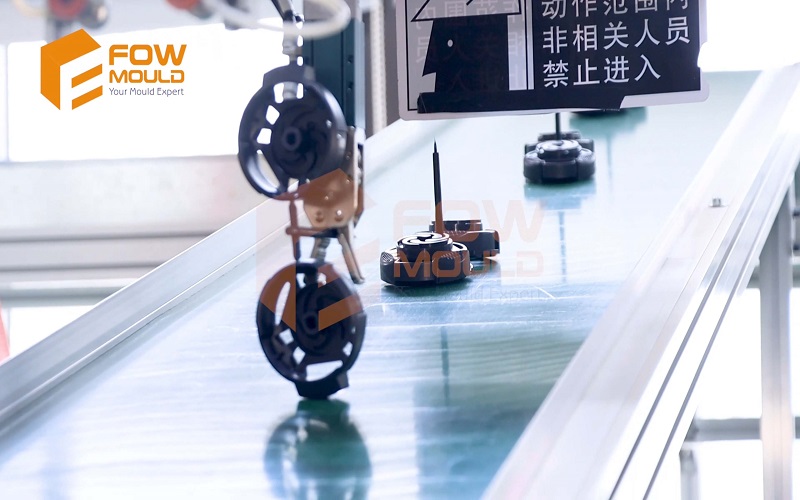As a popular material in the injection molding industry, the application of ABS is ubiquitous, ranging from 3D printing to automotive parts and household goods. However, with its widespread use, questions about its safety have also come to the fore.
Is ABS plastic safe? How does it affect health and the environment? In the following content, we will reveal the safety of ABS and how it can affect our health and environmental safety from a comprehensive perspective.
What Is ABS Plastic?
ABS plastic is a terpolymer composed of acrylonitrile, butadiene, and styrene. The relative content of these three monomers can be varied to produce various resins, giving ABS the ability to be molded into complex shapes, provide high strength, and resist environmental factors.
ABS is non-toxic and odorless, with an opaque, ivory-colored, granular appearance. In its raw form, ABS appears as a white, granular material; care should be taken to avoid inhalation of dust or prolonged skin contact during handling. It is currently one of the most produced and widely used polymers.
ABS can also be combined with other materials, such as through co-extrusion with different plastics, to enhance specific properties like UV resistance or low-temperature performance for tailored uses.
The addition of acrylonitrile not only enhances the material’s chemical resistance but also improves its temperature tolerance, which is crucial for applications in 3D printing and automotive parts.

ABS Filament In 3D Printing: Safety And Performance Considerations
ABS filament stands out as a popular choice in the world of 3D printing, thanks to its desirable properties such as heat resistance, durability, and impressive impact resistance.
These characteristics make ABS filament an ideal material for creating functional parts that need to withstand demanding conditions.
The manufacturing process of ABS filament is designed to enhance these resistant qualities, ensuring that the material performs reliably during the printing process.
However, while ABS filament offers unique advantages, it is crucial to be aware of the health risks associated with its use.
During the printing process, ABS can release harmful fumes, including volatile organic compounds that may cause discomfort such as drowsiness, eye irritation, nausea, and headaches. The smell of these fumes is unpleasant to most users.
Research shows that some of the volatile organic compounds released are considered carcinogenic, raising concerns about long-term health effects.
Prolonged exposure to these fumes can pose risks to your respiratory system and overall health. The risks associated with long exposure to ABS fumes are significant, as chronic inhalation may lead to more severe health issues over time.
It is important to note that even a short period of printing with ABS can release hazardous fumes and ultrafine particles, so proper precautions should be taken regardless of print duration.
To minimize these risks, always operate 3D printers in a well-ventilated room and consider opening a window for additional airflow. Using a box or enclosure equipped with a fan and filtration system can further reduce exposure to fumes and particles.
Many 3D printing manufacturers recommend enclosed printer setups with filtration to further reduce exposure to harmful emissions from the machine during operation.

Common Applications Of ABS Products
ABS combines excellent mechanical properties, such as toughness, hardness, and rigidity, with good chemical resistance, making it widely used in automotive parts, electronic casings, electronics, and everyday consumer goods. Its low cost is another key reason for its widespread use across industries.
Compared to other plastics, ABS offers superior safety and durability, making it a preferred choice in many demanding applications, including construction, where it is used for piping and building components due to its strength and resilience.
In the automotive industry, the high strength and heat resistance of ABS are suited for manufacturing components like dashboards, interior parts, and bumpers, ensuring the safety and durability of car parts in various conditions.
ABS is also valued for its resistance to fire hazards in electrical applications. Additionally, the good electrical insulation properties of ABS plastic make it an ideal choice for protecting electronic components from damage.
ABS is also commonly used to manufacture boxes and enclosures for electronics and toys, providing protective housing and reducing exposure to potential hazards. Through ABS injection molding, precise and durable components are produced, enhancing its versatility.
In household products, ABS is considered a safe plastic for use in consumer goods, including those that come into contact with food or children. Its durability and non-toxic nature make it suitable for making various home appliances, such as telephones and vacuum cleaners.
The global business of ABS manufacturing plays a significant role in meeting market demands and adhering to safety standards for a wide range of products.

ABS and Toys:Non-toxic Products
The combination of acrylonitrile butadiene styrene’s durability, safety, and ability to withstand high temperatures makes it an ideal choice for toy manufacture worldwide.
As a safe plastic, ABS is valued by manufacturers for its non-toxic properties, making it perfectly safe for use in children’s toys. However, it is important to note that some toys may possibly pose risks if they are not manufactured to proper standards or if quality control is lacking.
The material’s strength and resistance to impact ensure that toys made from ABS, including those produced through ABS injection molding, can handle rough play without breaking or releasing small, hazardous pieces.
To guarantee the safety of ABS toys, manufacturers must comply with strict safety regulations that govern the use of chemicals and materials in toy production. It is crucial not to throw caution to the wind when it comes to toy safety, as adherence to regulations is essential for minimizing risks.
For example, regulations strictly limit the presence of lead and other heavy metals in paints and finishes, and any toys that do not meet these standards are quickly removed from the market. This regulatory oversight helps minimize the risk of toxic exposure for children.

The Environmental Impact of ABS:Is A Sustainable Option?
The environmental impact of ABS is a significant consideration for both manufacturers and users of this versatile plastic.
As a non-biodegradable material, ABS can contribute to the accumulation of plastic waste if not disposed of responsibly.
However, ABS filament and other ABS products are recyclable, and many manufacturers are now implementing recycling programs to help reduce the environmental footprint of their materials.
In addition to recycling, some companies are investing in new technologies to produce ABS from renewable resources, such as biomass, which can help decrease reliance on fossil fuels and lower the overall environmental impact.
Researchers are also exploring alternative materials, including bioplastics and plant-based plastics, that could serve as substitutes for ABS in certain applications.
To further minimize the environmental impact of ABS, it’s important to follow proper disposal procedures and consider using recycled ABS filament whenever possible.
By making informed choices and supporting responsible manufacturers, we suggest users can help ensure that ABS remains a valuable material while reducing its contribution to plastic pollution.

ABS and Human Health: Evaluating Potential Risks
With rising health awareness, the question of whether ABS poses a risk to human health has become a hot topic.
Under normal use, ABS is non-toxic and harmless, containing no harmful chemicals like bisphenol A (BPA) or phthalates.
However, during processing, especially during 3D printing, ABS may release volatile organic compounds (VOCs), such as styrene.
If these gases accumulate in a poorly ventilated environment, they may irritate the respiratory system. Furthermore, direct contact with hot ABS material may cause skin burns, so appropriate precautions and protective gear should be taken during processing.
This is why it is strongly recommended that printers using ABS use an airtight enclosure and air filtration system to prevent the release of harmful gases into the workspace.
While ABS is considered safe for everyday use, specific precautions should still be taken to protect human health, such as during processing or burning.

Is ABS Plastic Safe?
Returning to our initial question: Is ABS safe? From the material standpoint, ABS plastic is safe as it does not contain any known carcinogens.
This contrasts with the safety of PVC, which often contains phthalates that can be harmful to human health and the environment.
However, ABS has an oxygen index of 18.2%, classifying it as a flammable polymer.
When ABS plastic burns, it produces black smoke and releases toxic gases, including harmful compounds such as styrene and butadiene. The gases released can be dangerous to human health, especially in poorly ventilated conditions.
ABS does not degrade or release harmful chemicals when exposed to normal heat or sunlight, making it stable and safe for everyday use. However, risks increase when ABS is exposed to open flames or high temperatures, as this can lead to the release of dangerous substances.

Mitigating Risks With Technology When Using ABS
When working with ABS , leveraging technology is key to maintaining safety and print quality, especially in environments where high temperatures and fumes are a concern.
One effective solution is the use of advanced filtration systems, such as HEPA filters, which help remove harmful particles and gases from the air during the printing or manufacturing process.
This is particularly important in 3D printing, where ABS fumes can pose health risks if not properly managed.
Maintaining the correct bed temperature and using a heated bed are also crucial for achieving optimal print quality and minimizing issues like warping or poor adhesion.
By carefully controlling temperature settings, manufacturers and users can ensure that ABS prints are both durable and precise.
In addition to technological solutions, strict adherence to safety regulations and workplace guidelines is essential.
For example, providing personal protective equipment (PPE), ensuring proper ventilation, and regularly monitoring air quality can significantly reduce the risk of exposure to ABS fumes and other hazards.
Manufacturers are encouraged to implement these safety protocols and invest in technology that supports a safe working environment.
By combining modern technology with robust safety practices, both manufacturers and individual users can safely work with ABS, enjoying the benefits of this popular material while minimizing potential risks to health and print quality.
Conclusion
In conclusion, ABS is a thermoplastic with outstanding properties, but its application must be in compliance with safety and environmental standards.
It is non-toxic under normal usage conditions and does not contain harmful chemicals like Bisphenol A (BPA) and phthalates. However, it can produce harmful substances when processed or burned.
Therefore, it is crucial to avoid high-temperature sterilization methods for products made from ABS material and to follow the relevant usage regulations and standards.
FOWMOULD will continue to focus on the potential impacts of plastics on the environment and health alongside you.
